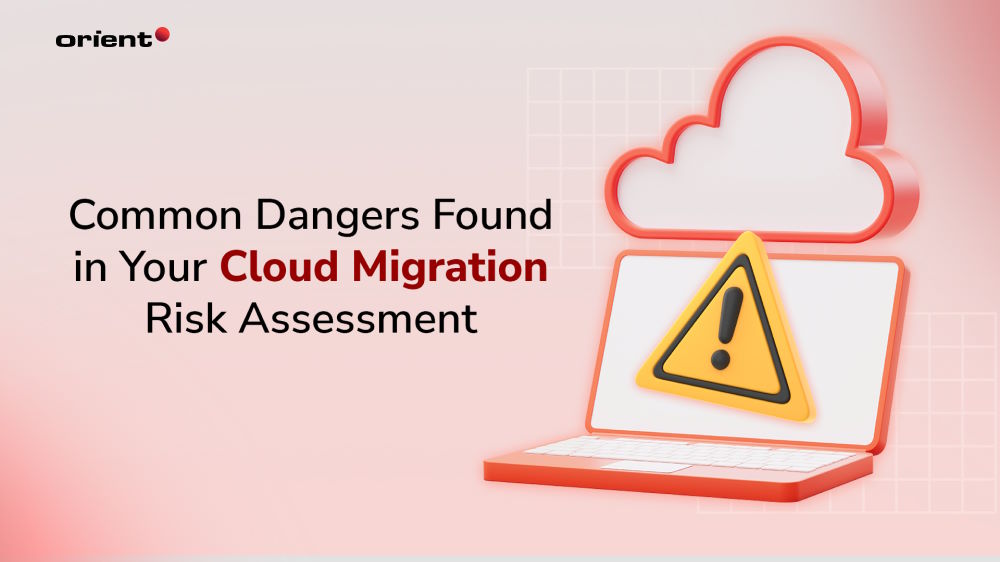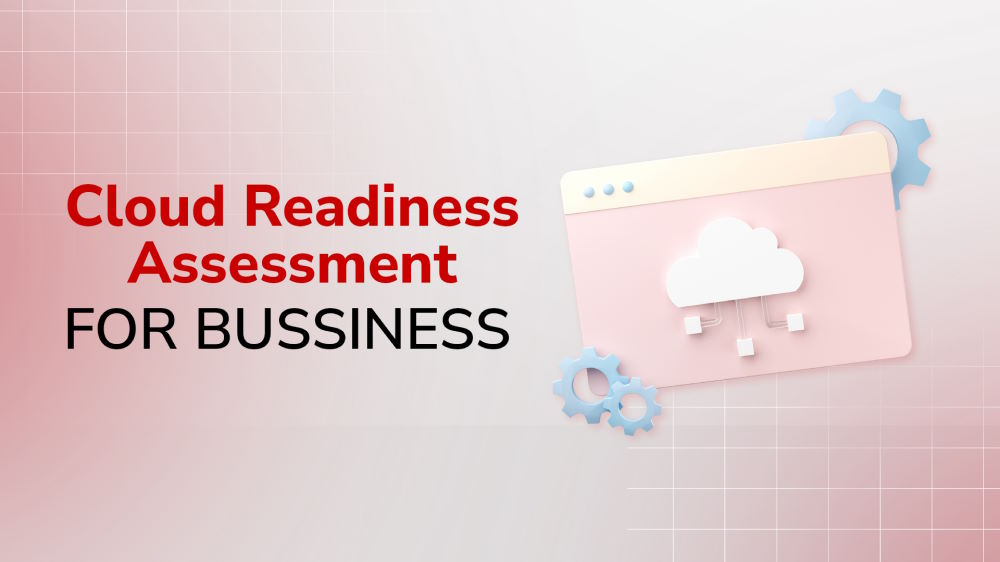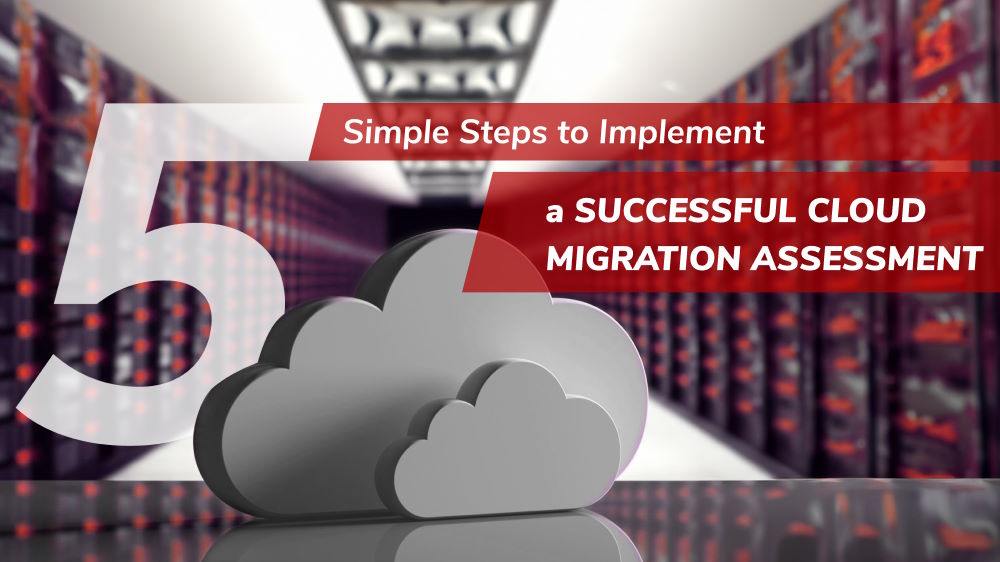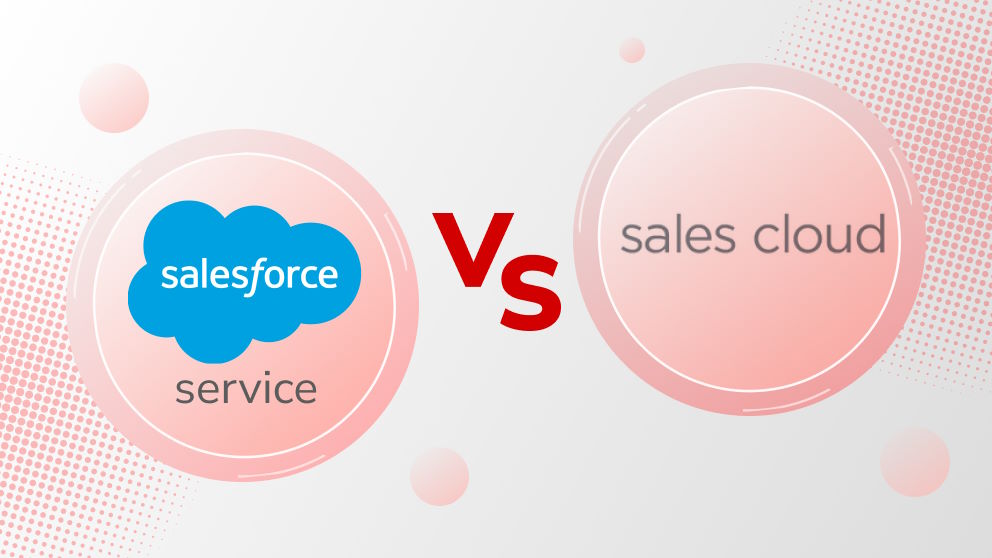Common Dangers Found in Your Cloud Migration Risk Assessment

Content Map
More chaptersCloud computing is on the rise due to its many significant benefits for businesses. However, the cloud migration process is more complicated than it may seem. It is not a one-size-fits-all approach for every organization, as not all companies have the necessary IT infrastructure resources to adopt cloud services.
It is a thorough cloud migration risk assessment that will give you the most accurate judgment of your company’s current state. Whether you are ready to join the migration to the cloud or not, the results of such a process will provide an answer.
Through risk assessment, businesses reveal hidden weaknesses that require immediate remediation or abandonment of the entire cloud deployment. Factors hindering cloud migration may vary. To help you prepare and achieve a successful cloud migration, here we reveal the top dangers that most businesses are likely to encounter during their cloud transition. If you are experiencing more than half of the listed hassles, you better improve them as soon as possible.
#1 Data Security Incidents

All vulnerabilities related to cloud security, such as data unauthorized access and data leakage, are known as data security risks. These damages often occur during the transition from on-premises systems to new cloud environments due to the complexity of data and the uncovered security flaws within internal systems. Data security hassles, if not promptly resolved with robust security measures and risk assessments, can potentially lead to data loss, data leakage, compliance violations, or even financial consequences.
Common reasons for data security threats include:
Misconfigurations
Cloud migration is more than a daunting task. However, because this process often requires many complex setups and settings, businesses easily fall into misconfigurations resulting from lack of expertise, human error, and oversight, which can negatively affect the safety of the entire system. Not restricting access to the platform, applying improperly configured authentication, using open network ports, or storing data in unsecured storage buckets are all actions that make your software product more vulnerable than ever.
Inadequate Encryption
If your system lacks robust algorithms and practices employed to protect data, it may be vulnerable to security breaches. Sensitive data cannot secure itself. Gaps in encryption protocols, such as incomplete encryption implementation, outdated encryption standards, or failure to encrypt data at rest, can unintentionally create opportunities for unauthorized actors to access and attack stored information, causing data loss.
#2 Compliance and Regulatory Issues
As the process of getting to a certain cloud environment mainly revolves around data transferring, most legal agencies in countries have issued relevant laws to protect user information and network security. These industry standards and data protection requirements typically contain a number of provisions regarding the handling, storage, and transfer of data during the migration process to cloud-based environments.
Each region uses different legal frameworks such as GDPR, HIPAA, or PCI DSS. Depending on where you set up your cloud infrastructure, you must align with the security and compliance requirements throughout the migration journey. Failure to comply with regulations and relevant laws may lead to penalties, legal consequences, reputational damage, and data security enforcement.
Common reasons for compliance and regulatory issues include:
Lack of Understanding
When companies lack awareness or understanding of the laws that govern data privacy in cloud solutions, they are more likely to unintentionally violate these compliance obligations. As a result, inadequate knowledge or awareness of relevant law sometimes costs you dearly. Whether you are the owner of a startup with no experience working in the cloud migration process or someone who has worked with industry standards before, constantly updating changes in laws and self-educating on regulations is important to avoid potential compliance issues.
Violation of Data Residency
Not every place can be used to store data when it requires high security and safety. According to data residency regulations, data must be stored, processed, and handled where eligible based on jurisdictional laws and privacy requirements. Storing sensitive data in locations that are not in accordance with legal mandates, in addition to exposing businesses to legal issues, also erodes customer trust and confidence in the brand, whether the organization truly protects customer information as committed or not.
Lack of Transparency
A lack of transparency is one of the common cloud migration risks that can lead to compliance and regulatory issues during cloud migration. As with all other business activities, transparency plays an important role in demonstrating trustworthiness and accountability with relevant regulations and involved parties.
Cloud migration transparency is demonstrated by clearly communicating data handling practices, security measures, and compliance efforts to stakeholders, regulators, and users. If a business lacks transparency regarding how data is managed, the individuals involved have the right to raise suspicions of non-compliance, negatively affecting the business’s reputation.
#3 Downtime and Service Disruptions
For a cloud migration process to go smoothly, it requires the support and contribution of many different elements. If just one element operates abnormally or not as expected, the risk of downtime immediately occurs in parallel. Regardless of the length of interruptions in service availability during the process of transitioning, downtime can affect overall operational efficiency.
Employees cannot access critical data, which leads to decreased work output. Businesses that rely on continuous service availability experience downtime and are at risk of revenue losses. That’s why, in any situation, you must equip yourself with contingency plans to overcome consequences and ensure a smooth workflow.
Common reasons for service disruptions include:
Technical Issues
Whether you like it or not, technical issues can appear at any time during your cloud transition process. Such problems are not necessarily big errors since small ones can also hinder your service operations. The most common technical hiccups include poor network-affecting data transfer and communication between systems, software bugs causing unexpected errors, or insufficient computing power and storage capacity resulting in performance bottlenecks.
Inadequate Backup and Recovery
Downtime, whether partial or complete, can have far-reaching consequences without robust backups and recovery strategies, impacting the overall operational efficiency. Situations that you could have handled more effectively now have severe consequences on productivity, reputation, and finances simply by overlooking the importance of disaster recovery planning.
Here is an example scenario illustrating how a lack of backups can lead to service disruption and downtime. Suppose you are an e-commerce retailer that is migrating the online store to a cloud platform to enhance performance. However, when an unexpected issue occurs, your company, with no backup plan, experiences serious service corruption. Instead of quickly remediating the damage with the most recent backup of the customer database, you must gather information manually, prolonging the recovery process and impacting revenue generation, customer satisfaction, and brand reputation.
Performance Degradation
Performance degradation refers to a situation where the system performance deteriorates below expected levels. Business owners can recognize signs of performance degradation through clear signs such as extended response times, communication delays, increased frequency of timeouts, difficulty in scaling, etc. By letting these situations continue for a long time without timely remedial measures, businesses increase the likelihood of unexpected system failures, even leading to financial losses due to unmet customer demands and missed opportunities.
#4 Integration Challenges

Integration challenges in cloud migration are barriers businesses may encounter when moving their applications and data from on-premises to multiple cloud environments. Overcoming such difficulties, you unlock numerous benefits that can further push your company to tremendous success. If not, several consequences and implications, like increased costs, may arise instead.
Once you embark on the cloud migration path, you must accept the risk of disrupting existing stable systems and workflows. Challenges related to connecting and adapting the interaction between available software products to ensure continuity and functionality post-migration is a big deal. However, by implementing best practices, using the right tools, and following a structured plan, you can minimize the risk of facing integration issues in cloud transition.
Common reasons for integration challenges include:
Legacy Systems Integration
Due to outdated architectures, legacy systems or monolithic applications often cause numerous difficulties for businesses in the process of integrating with modern cloud platforms. By being programmed in old languages and methodologies, they are no longer widely supported or compatible with modern technologies. Most legacy applications that exist today lack the flexibility and API support needed to perform a seamless integration process.
As a result, legacy system integration, coupled with nearly zero ability to adopt new digital technologies, are the leading factors causing businesses to miss out on innovation opportunities and increase technical debt.
Data Migration Complexity
Software products heavily rely on data to function properly. However, the high complexity and diversity of data also pose countless difficulties for businesses migrating to the cloud. Existing in many different formats and structures across storage mechanisms, integrating disparate data centers from on-premises systems to the cloud can be a daunting and time-consuming task. Compatibility issues, data quality concerns, or data governance challenges can happen at any time. That is why businesses need to carry out processes such as data mapping, transformation, and cleansing processes to ensure the consistency of data in post-migration strategy.
#5 Vendor Lock-in
Many businesses rely on the help of a third party, such as an outsourcing partner, to simplify the cloud migration process. There is no denying the great benefits that a third-party vendor brings to organizations, but it also comes with some risks. Multiple cloud providers are available in the market. In case you select the wrong cloud service provider, you are wasting time and money in vain. If you partner with the right party, you easily fall into what is called vendor lock-in - a situation where a company becomes heavily dependent on a specific cloud provider for its entire operations. This dependency hinders businesses from proactively bringing operations back in-house or switching to alternative cloud providers.
Common reasons for vendor lock-in include:
Reliance on Proprietary Services
To assist customers in bringing on-premises infrastructure to the cloud, third parties often use proprietary technologies, tools, and APIs that are unique to their platform. As all workflows are established and the user’s data volume since collaboration is constantly growing, business dependencies on the provider can deepen over time. Companies that heavily utilize these vendor-specific features may find it difficult to migrate data and applications seamlessly to a different cloud provider without significant effort and cost to reconfigure or rebuild applications.
Absence of Exit Strategies
The fact is that businesses can still escape the siege of vendor lock-in, but only with exit strategies. Exit strategies are plans created to outline ways that service users can smoothly transition from one cloud service provider to another at a future time if necessary. To achieve this, customers need to clearly communicate with the third party and include these terms in the business contract. Otherwise, failure to create exit strategies could mean being bound by long-term contracts that impose restrictions on switching providers or accept penalties for early termination to transition smoothly.
Cloud migration assessment truly brings businesses a wide range of benefits, including automation, flexibility, scalability, etc. However, we cannot deny the potential risks presented in all phases of cloud migration, from the very first planning stage to the end of such a process.
You definitely can stand alone and solve all the hassles, but only with the right cloud migration strategy and expertise. Otherwise, partnering with a trusted IT outsourcing company like Orient Software, which has a proven track record in cloud transition, turns out to be an ideal option. We are here to help businesses, regardless of size, leverage their project idea as they need without any limitations and restrictions. By directly participating in every development cycle together with us, clients have the full power to retain control over project milestones, deliverables, and outcomes. Contact Orient Software today to achieve cloud success with ease.







